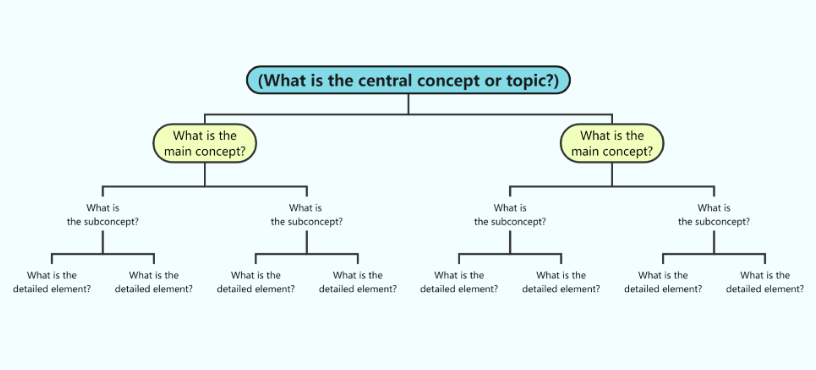
Planning can often feel overwhelming, especially when dealing with complex ideas and multiple variables. In this blog post, we will introduce you to the concept of concept maps and how they can help you organize your thoughts for streamlined planning. Discover the step-by-step process of creating a concept map and witness the transformative power of visual organization.
- Start with a Central Idea:
Begin your concept map by identifying a central idea or goal that encompasses the essence of your plan. This central concept will serve as the foundation for your map, anchoring all other related ideas and elements. - Branch Out with Main Concepts:
From the central idea, branch out to main concepts or key components that contribute to the realization of your goal. These main concepts should capture the major aspects of your plan and act as primary branches in your concept map. - Add Sub-Concepts and Connections:
Next, add sub-concepts or sub-components to further elaborate on each main concept. These sub-concepts can be represented as secondary branches connected to the main concepts. Ensure that the connections accurately reflect the relationships between the concepts, whether they are causal, hierarchical, or associative. - Use Visual Elements:
Make your concept map visually engaging by incorporating color coding, icons, and other visual elements. These visual cues can help differentiate between different types of concepts, highlight important information, or indicate the level of importance or priority. Visual elements also aid in memory retention and make the concept map more appealing and accessible. - Review, Refine, and Iterate:
Once you have created your initial concept map, take the time to review and refine it. Assess the clarity of the connections, the completeness of the information, and the overall organization. Make necessary adjustments and iterate on your concept map as your planning process evolves or new insights emerge.
Get Started for Free
Conclusion:
Concept maps offer a powerful approach to organizing your thoughts and streamlining your planning process. By starting with a central idea, branching out to main and sub-concepts, utilizing visual elements, and leveraging software tools, you can create comprehensiveconcept maps that capture the essence of your plan. Embrace the concept mapping technique and experience the benefits of enhanced organization, improved clarity, and increased efficiency in your planning endeavors. Take control of your thoughts, unleash your creativity, and watch your plans come to life with the help of concept maps.


